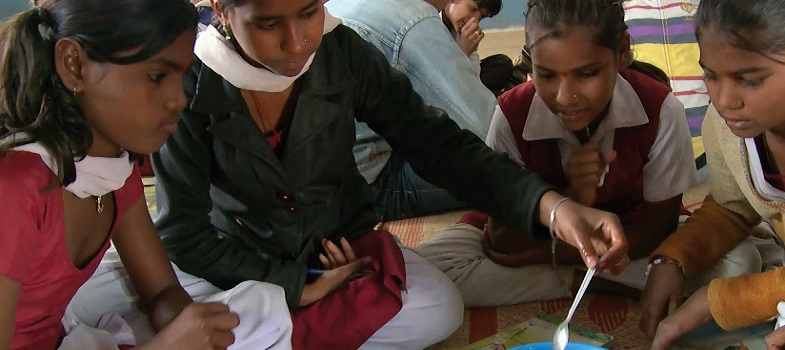4 Helping students to change alternative conceptions
After you find out what ideas your students hold, what can you as a science teacher do to change their alternative conceptions and help them to construct a more scientific understanding? In the next case study you will find out how one teacher approached her lesson.
Case Study 2: Developing students’ understanding
Mrs Puthir’s students had learned how to use a thermometer and she carried out a true/false quiz. In this case study she talks of what she found out and the lesson she taught to change their ideas.
I teach a large class of 66 Class VI students. I had found out that many of them believed that the temperature of an object depended on what it is made of. I wanted to teach them about temperature and how all objects will be the same temperature as their surroundings. Also, I wanted to get them to understand why temperature changes.
I decided to get the children to measure the temperature of different substances. I had lots of examples, including cloth, fur, a tile, a metal spoon, a fruit, some soil, a wood block with a hole in it for the thermometer, a cup of hot tea, some water at room temperature and some very cold water.
I told the students to work in groups of six. I didn’t have enough equipment to give every group a full set. I was also worried about them knocking over the hot liquid. So I decided to put the substances around the classroom with a thermometer. I told the students that they had to send two from the group to measure the temperature of an object. Both had to take the temperature so they got two readings. This way, students got to practice using the thermometer, as well as confirming they had read it correctly. I drew a table on the blackboard (Table 1) for them to copy and complete.
| Object of substance | Temperature 1 | Temperature 2 |
|---|---|---|
I showed them how to do one reading and reminded them of how to read the scale on the thermometer. Each pair did two or three substances.
When they finished, we went through their results as a class. They had all found the same temperatures for most substances. I asked if any results had surprised them. Some students had thought fur and cloth would have higher temperatures than the tile and the metal spoon, which they said felt colder.
The only difference was with the hot water and cold water. The groups had recorded different temperatures. I asked why this was. Was the thermometer broken? They didn’t think so, and thought it was because the hot water was losing heat and the cold water was warming up. I asked what the temperature of both would be if we left them long enough. Their answers were interesting and diverse. From there, I explained how temperature measures the intensity of the heat in an object and how it is transferred until it is the same temperature as the surroundings.
Pause for thought
|
Once you have tried to develop your students’ ideas, you need to assess their understanding. You might use the same technique that you used to find out about their misconceptions, or give them new situations to which they can apply their new understanding.
3 The ideas children have about heat and temperature
